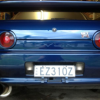Rb26 Head Rear Oil Drain
Announcements
-
Similar Content
-
Latest Posts
-
I searched , but did not find what I need, I am mainly looking for where the jack fits into bracket in rear left trunk/fender bracket on a GTT and what holds it in place.
-
I go back to, skip the concrete, we just need smooth dirt/grass... You weld us up one of those huge take like things you buy at Bunnings for spreading dirt nicely, except we'll tow it behind a car instead of push by hand. 😛
-
By Dose Pipe Sutututu · Posted
That's great news Skyline scene is a bit odd (yes I've been following that particular Facebook page), and most of the owners are young boys with no money. -
fair call, but the going price of a '16 RS is around $30k. also don't think you have any chance of finding a '21 400R for close to that figure. If you find one.. sign me up!






Recommended Posts
Create an account or sign in to comment
You need to be a member in order to leave a comment
Create an account
Sign up for a new account in our community. It's easy!
Register a new accountSign in
Already have an account? Sign in here.
Sign In Now